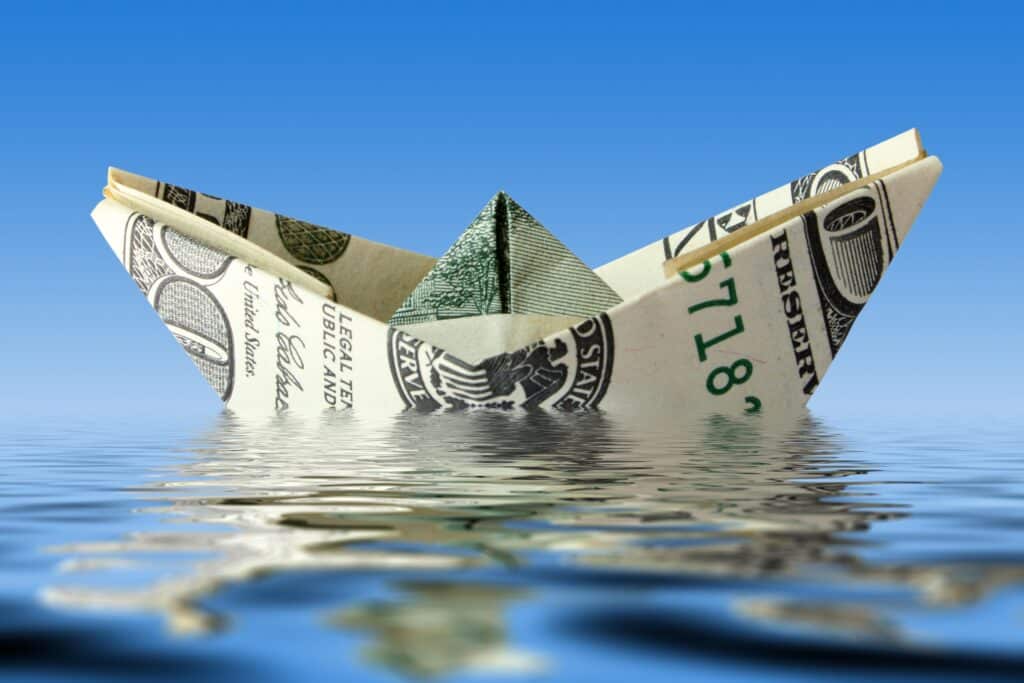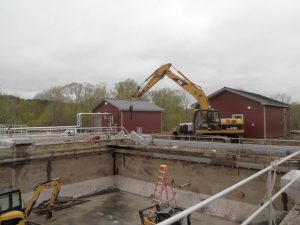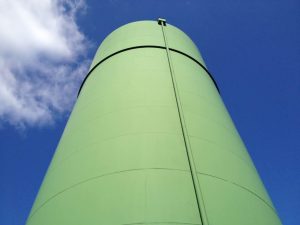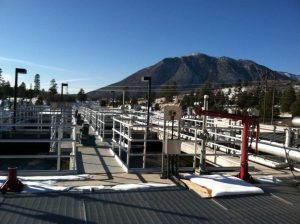Navigating the complicated maze of funding opportunities can be, well, complicated; there’s the time it takes to research applicable programs, time to understand them and their application guidelines, then there’s organizing your own initiatives and keeping track of deadlines. Municipalities also have to weigh the pros and cons of choosing a public or private program (or maybe a hybrid!) or if they should venture into federal initiatives or state-specific programs.
Combined, all of these decisions can make a necessary task a daunting one.
 Each source of funding comes with its own set of requirements, benefits, funding parameters, and other considerations. By taking the time and care to properly research the available opportunities, water and wastewater utilities can secure the critical resources they need in order to deliver better outcomes for their communities.
Each source of funding comes with its own set of requirements, benefits, funding parameters, and other considerations. By taking the time and care to properly research the available opportunities, water and wastewater utilities can secure the critical resources they need in order to deliver better outcomes for their communities.
But where do you start? Right here!
While this is by no means an exhaustive list of all of the funding opportunities available to us in New England, it’s an informative and comprehensive starting point.
State Revolving Funds (SRFs)
 Clean Water State Revolving Fund (CWSRF)
Clean Water State Revolving Fund (CWSRF)
The Clean Water State Revolving Fund (CWSRF) is a federal-state partnership program with the EPA that provides funding to projects focused on reducing water pollution and protecting our vital water sources.
Eligible projects include, but are not limited to, ones with a focus on constructing or repairing existing sewer systems, creating green infrastructure, mitigating nonpoint source pollution from runoff and urban stormwater, and other water management projects. In the form of zero percent interest to low-interest loans (and a 20% match by the state), the CWSRF is able to help municipalities upgrade their wastewater treatment facilities, which is crucial in removing contaminants and providing residents with clean, safe, and accessible drinking water.
Drinking Water State Revolving Fund (DWSRF)
The Drinking Water State Revolving Fund (DWSRF) is another federal-state partnership program that provides funding for municipalities needing to make crucial improvements to their infrastructure, specifically those in small and economically disadvantaged communities.
Funding is given in low-interest loans and grants to eligible projects that are in need of repairing and upgrading wells and storage tanks to mitigate contamination, connecting multiple water systems, replacing broken or damaged pipes, building water treatment plants, or creating entirely new systems. In doing so, the DWSRF helps municipalities also fall in compliance with the EPA’s Safe Drinking Water Act (SDWA) by not only promoting public health but also ensuring residents can have access to clean, safe, and reliable drinking water.
It’s important to note that a stipulation of the funding is that eligible states must be able to match 20% of the grant.
Compared to the CWSRF, the DWSRF mainly aids projects with a focus on the safety and reliability of our drinking water. Whereas the CWSRF focuses on addressing wastewater infrastructure needs head-on, However, both are critical funding opportunities that focus on maintaining and improving our nation’s water infrastructure, protecting public health, and fostering environmental sustainability.
To read more information about these two SRFs, you can read our previous blog.
 Water Infrastructure Finance and Innovation Act (WIFIA)
Water Infrastructure Finance and Innovation Act (WIFIA)
The EPA’s WIFIA is a federal initiative that provides funding for eligible water and wastewater infrastructure projects. The funding is long-term and in the form of low-cost loans for projects that require substantial financial assistance on both a regional and national level. What is particularly great about this act is that the WIFIA funds are able to cover up to 49% of eligible project costs, meaning this kind of funding can make a serious impact on local municipalities that are in great need.
WIFIA is open to eligible projects that are also eligible for the Clean Water SRF, Drinking Water SRF, and other water facility energy efficiency projects. Other projects like desalination, aquifer recharge, water recycling, and drought mitigation, among others, are also eligible. More information on WIFIA can be found here.
Emerging Contaminants in Small or Disadvantaged Communities Grant (EC-SDC Grant)
The EC-SDC Grant is a great resource for small or disadvantaged communities that are in critical need of improving their drinking water. With the funding, eligible municipalities can develop projects and activities in response to emerging contaminants, including PFAS. In doing so, they have the necessary tools to provide their citizens with continuous, clean drinking water. It should be taken into consideration that only municipalities with a population of 10,000 or less are eligible for this grant.
By focusing on communities with limited resources, this grant is able to better bridge the gap we often see in water quality and public health protection compared to more privileged communities, while supporting critical infrastructure improvements and instilling environmental justice across the state.
 United States Department of Agriculture (USDA)’s Water and Waste Disposal Loan and Grant Program
United States Department of Agriculture (USDA)’s Water and Waste Disposal Loan and Grant Program
The United States Department of Agriculture (USDA) supports rural water and wastewater utilities through its Water and Waste Disposal Loan and Grant Program. This initiative focuses on only rural areas and small towns with populations of 10,000 or fewer, which, as we know, are often in need of financial assistance to take care of their critical infrastructure needs.
Funding is in the form of long-term, low-interest loans and can be used for acquiring, building, or improving drinking water systems, sewer systems, solid waste management, and stormwater systems. The program also covers other areas of the project, such as legal and engineering fees, land acquisition, permits, equipment, start-up operations, etc., that are vital for public health and environmental sustainability.
In addition to federal programs, there are funding opportunities for each state. States often have their own grant and loan programs that are tailored specifically to their own unique regional challenges and priorities. For example, you can find more information on water resources grants and other financial assistance for projects such as drinking water, wastewater, septic systems, wetlands, and watersheds within the Commonwealth here.
Conclusion
Remaining proactive in the hunt for water and wastewater financial assistance is not for the faint of heart. But it is evident that there are a range of options out there that are often able to be combined. Navigating federal programs, state-specific funds, private grants, and public-private partnerships can be overwhelming, but they provide communities with the robust framework they require in order to take the next steps in addressing their infrastructure needs.
By prioritizing these opportunities, utilities can not only overcome financial barriers, but they can also gain the necessary tools to find long-term solutions while completing their goal of providing their communities with accessible, clean, and safe drinking water.
You can also read more about other funding opportunities by visiting our previous blog, Funding 101: Where to Find Money for Critical Water and Wastewater Projects.





 Trump’s proposed FY18 budget includes deep cuts to the nation’s major infrastructure programs. Both the DWSRF and CWSRF, funded by the EPA, are slated for drastic reduction under Trump’s budget, while the CBDG program is marked for elimination. In fact, Trump’s budget proposes to completely eliminate 66 federal programs including not only CBDG but also the United States Department of Agriculture’s Rural Water and Waste Disposal Program, and the Northern Border Regional Commission, which is a Federal-State partnership for economic and community development within the most distressed counties of Maine, New Hampshire, Vermont, and New York. Without these funding programs, some communities may not be able to implement needed system improvements.
Trump’s proposed FY18 budget includes deep cuts to the nation’s major infrastructure programs. Both the DWSRF and CWSRF, funded by the EPA, are slated for drastic reduction under Trump’s budget, while the CBDG program is marked for elimination. In fact, Trump’s budget proposes to completely eliminate 66 federal programs including not only CBDG but also the United States Department of Agriculture’s Rural Water and Waste Disposal Program, and the Northern Border Regional Commission, which is a Federal-State partnership for economic and community development within the most distressed counties of Maine, New Hampshire, Vermont, and New York. Without these funding programs, some communities may not be able to implement needed system improvements.


 Established by the 1987 amendments to the Clean Water Act, the CWSRF Program is a federal-state partnership that provides a permanent, independent source of low-cost financing to communities for a wide range of water quality infrastructure projects. The program is a powerful partnership between EPA and the states that gives states the flexibility to fund a range of projects that address their highest priority water quality needs.
Established by the 1987 amendments to the Clean Water Act, the CWSRF Program is a federal-state partnership that provides a permanent, independent source of low-cost financing to communities for a wide range of water quality infrastructure projects. The program is a powerful partnership between EPA and the states that gives states the flexibility to fund a range of projects that address their highest priority water quality needs.



